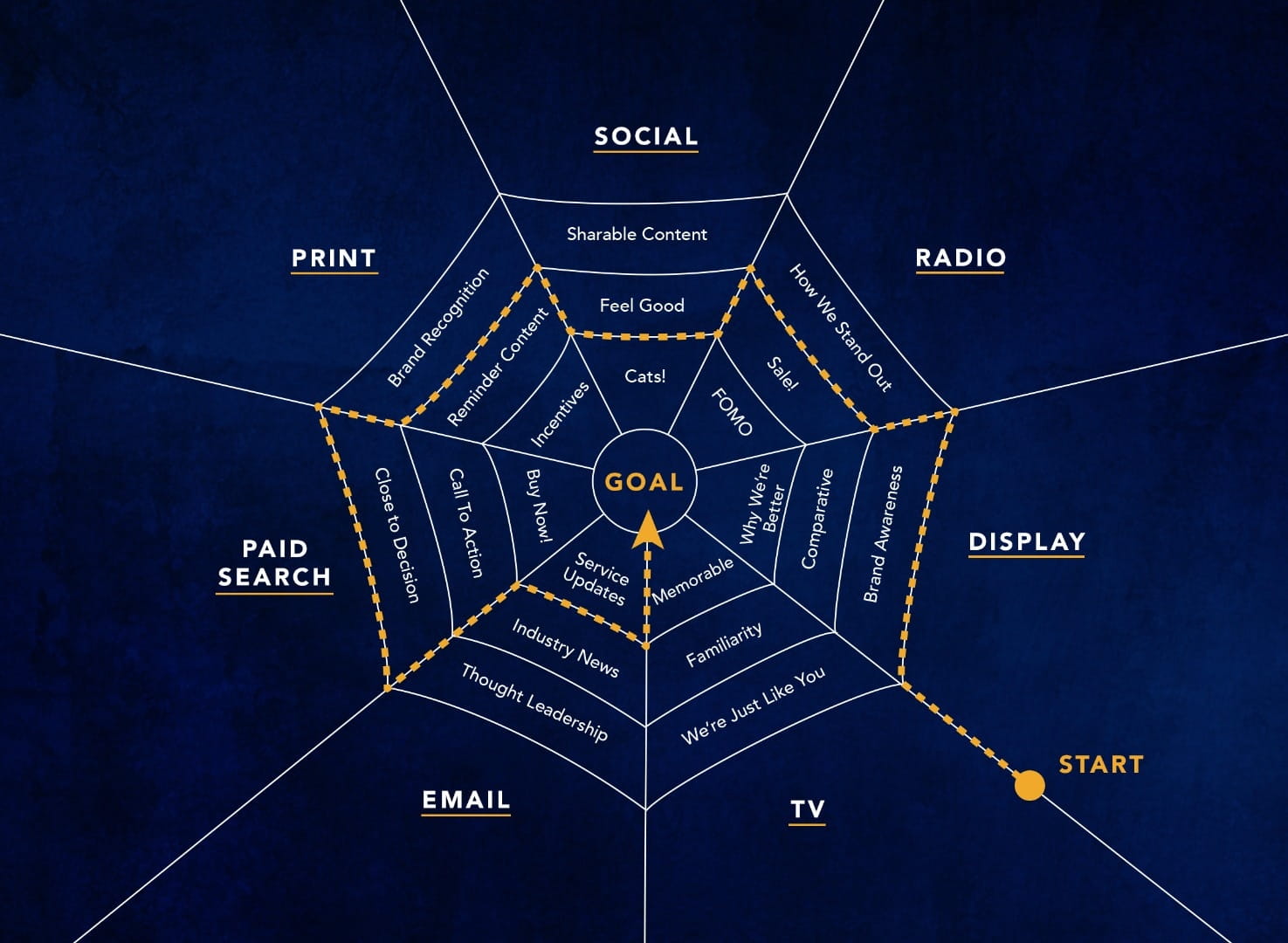The problem with most marketing departments is that more often than not, they don’t communicate well with one another. So many times I have run into a setup where one person is responsible for social media, another is responsible for email, yet another is responsible for paid search and so on.
It’s all well and good to have SMEs (subject matter experts) on your marketing team but if they’re not working together, what’s the point?
Tracking Success in Silos
This is the ‘analysis’ technique I see companies using all the time: Director of Marketing gets a report from the email team showing open rate, click-through rates, varying degrees of engagement analysis and, of course, revenue data. Then they get another report from the social media team showing likes, comments, shares etc. and yet another report from the paid search team showing cost-per-click and cost-per-conversion (and so on, and so on).
In what universe is this helpful?
As an SME running a certain marketing channel, you have to pay attention to metrics relevant for that channel in order to effectively optimize your efforts.
However, measuring success in a silo does nothing for your overall business goals and does not consider the many different touchpoints in which a person engages with your brand.

Modern Marketing is a Complex Web of Touchpoints
Did you know that when a spider builds its web it tunes the different sections so it knows exactly where its prey lands? Neat, huh?
You might be wondering why I suddenly started talking about spiders - when I think about the world of marketing it very much feels like a giant web of varying tones directed toward your audience.
Different channels will have different initiatives and goals, but as a business, the over-arching goals are the same for all channels and therefore need to be considered from a wider view.
Connecting Metrics Across Channels
To get a birds’ eye view of your marketing efforts, you have to be able to connect the different touchpoints across channels with each other. Ask yourself pertinent questions that will help to streamline your data in a meaningful way. Something as simple as ‘What is an Impression?’ can actually become quite complicated when running multi-channel marketing.
Display: this is likely the easiest channel to determine impressions, but does the impression count if only half of the ad is seen? What if your logo is on the bottom half of the ad?
Email: is it an impression when your email lands in someone’s inbox? Or does it only become an impression if they open the email?
Video: Is a video view an impression? What constitutes a video view? 10 seconds, 30, the whole thing? Can a video have an impression even if it is not played?
I could go on for hours, but the important thing to note is that you have to think about these things and make decisions about these questions before you start throwing marketing dollars around.
If you’re spending your budget in multiple channels and not making those connections then you’re just guessing at what’s working and what’s not. This isn’t Don Draper’s see-what-sticks 1960s; we’ve got technology available to us now that mostly eliminates the need for guessing.
The data will tell you what people want, but you have to be willing to take a step back and look at things as a whole. It takes a lot of planning and analysis, but in the end, you will have a much more captive audience.
Want to Find Out How?
Join me November 15th as I crack this topic wide open at our Q4 Lunch & Learn @ Liquid – “ROI Attribution: How to Effectively Measure Marketing Success.” I’ll get into more detail as I talk about the building blocks for measuring success, the steps for data integration, effective analytics strategies, and how to leverage your data for business growth.
Register by 11/10 to attend the no-cost seminar.
Have a specific question you’d like me to address during the talk? Drop me a line.

